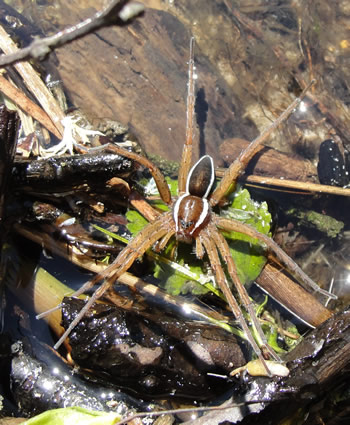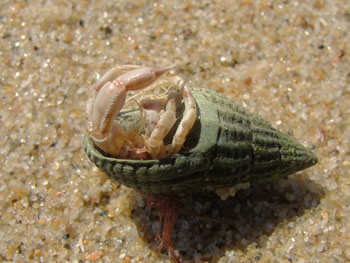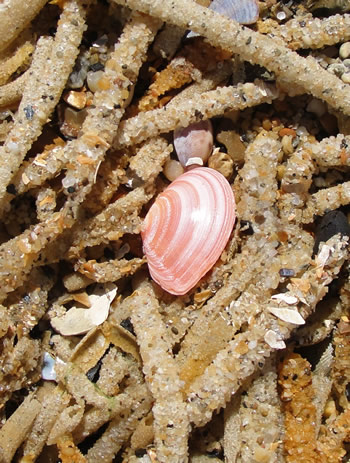So much rain poured through small stream systems and marshlands as the water from the surrounding hills gushed down enlarging small shallow warm pools where many species of heathland animals thrive. The ten spined stickleback(Pungitius pungitius) can live in brackish waters and although this specimen lived in fresh water.Many were flushed out and were trapped in puddles on a footpath along with three spines sticklebacks (gasterosteus aculeatus) .One specimen leaped out of the puddle in a desperate bid to escape a heron that was waiting but I found it and returned it to the main water which was just two meters away.
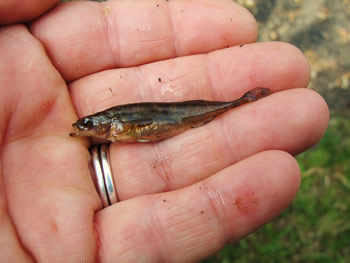 Also in the same puddle were several water spiders (Argyroneta aquatica). They were all females swept from their air filled bells underwater.This is the only known species of spider that lives its entire life under water.They collect surface air under their bodies and relocate it in their diving bell and stay there. they lash out at small passing animals.they also show parental care with their spiderlings.
Also in the same puddle were several water spiders (Argyroneta aquatica). They were all females swept from their air filled bells underwater.This is the only known species of spider that lives its entire life under water.They collect surface air under their bodies and relocate it in their diving bell and stay there. they lash out at small passing animals.they also show parental care with their spiderlings.
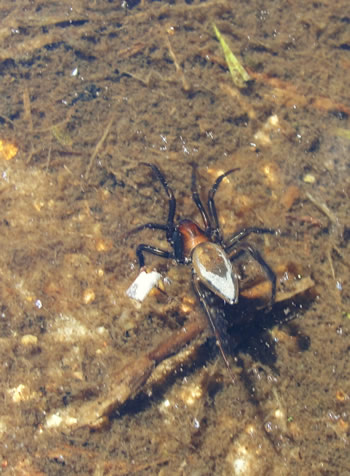 These spiders are not to be confused with the raft spiders Dolomedes fimbriatus)Which can submerge themselves to hide from danger and partially submerge to catch other animals. They are good at running across the surface.This specimen was in the same puddle.
These spiders are not to be confused with the raft spiders Dolomedes fimbriatus)Which can submerge themselves to hide from danger and partially submerge to catch other animals. They are good at running across the surface.This specimen was in the same puddle.
A Male sand lizard basks nearby in a dryer mossy area of heath,
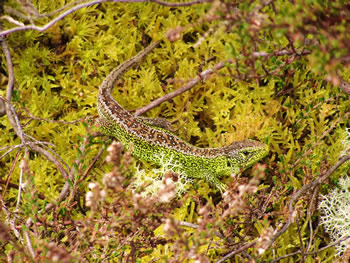 and a sika deer hind is concerned for the safety of her new born calf hidden amongst the gorse.
and a sika deer hind is concerned for the safety of her new born calf hidden amongst the gorse.
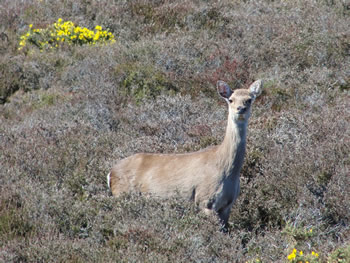 On the beach the high tide had shifted up lots of interesting shells and bits of small animals and weeds including many small hermit crabs (Pagurus bernhardus)in whelk shells.
On the beach the high tide had shifted up lots of interesting shells and bits of small animals and weeds including many small hermit crabs (Pagurus bernhardus)in whelk shells.
The pretty shell of the Thin Tellin , (Tellina tenuis) lies amongst many tube worms cases.(Lanicea)or (Polymnia)

